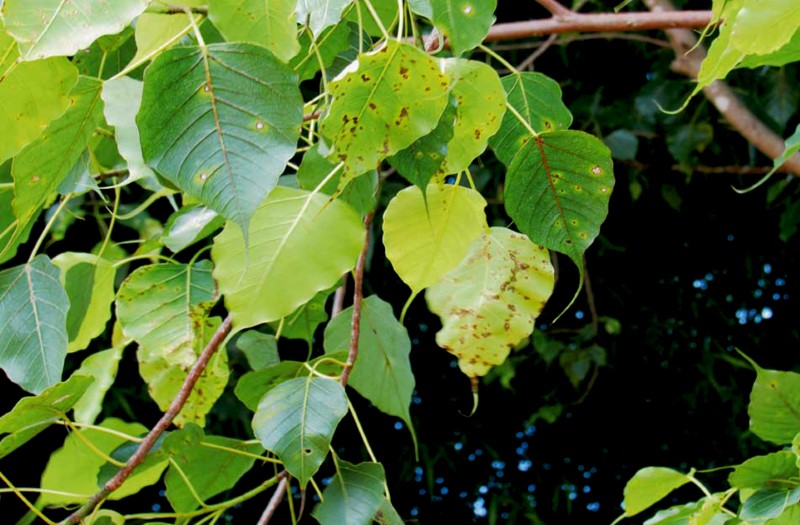Digital Garden
Trees of SN College Chempazhanthy:
Ficus religiosa L.
അരയാൽ
| Synonym: | Ficus peepul Griff. |
| Sub Family | Moraceae |
| Local Names: | Arayaal, Peepal tree, Sacred fig, Bodhivriksham |
 |
|
Flowering and fruiting period: November – February Key Characters: Ficus religiosa are deciduous trees; aerial roots absent. Leaves simple, alternate, margin entire, lateral nerves looped near the margin. Flowers unisexual; inflorescence a syconia; flowers of 4 kinds; male flowers ostiolar, tepals 2, ovate, free, reddish; female flowers sessile; tepals 3-4, linear, brownish, ovary superior; gall flowers similar to female. Syconium when ripening pink, purple or black. |
|